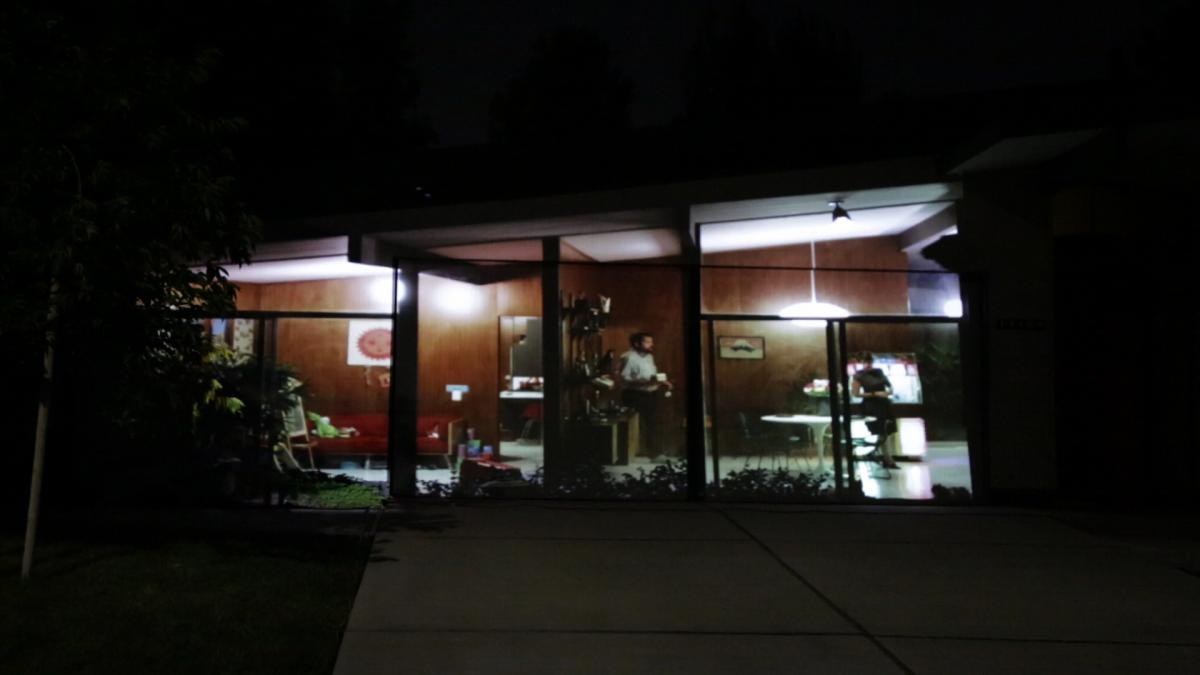Artist Nate Page Makes Eichlers His Subject and His Canvas
 |
|
|
One evening in September of 2013, Nate Page turned Eichlers inside out. The Los Angeles-based artist's latest installation, California Living, projected video footage of people living in the homes, shot at night from their backyards, onto the fronts of their houses in Granada Hills' Balboa Highlands Eichler tract.
The effect: transposing the Eichlers' signature openness onto their normally closed-off street-facing side. "The Eichler, for me, sort of epitomized this idea of openness. The modern notion of being amid nature and community. But it also includes this aspect of privacy and alienation," Says Page, 37, who holds a master's degree from the California Institute of the Arts." So the paradox of modern architecture and living is really clearly articulated in the Eichler design. The front, like a fortress wall, has no windows, then the back is floor-to-ceiling glass walls."
To play with the idea of that one-sided openness, Page set up video cameras in the backyards of his subjects, whom he filmed at night. They knew they were on film, but Page refrained from giving instructions on how to act, preferring to see how people would behave on their own.
"Most people did not ham it up. There are a few special events that happened – somebody hosted an atomic-age mid-century modern party, where they played piano and sang – but I think they still behaved relatively normally," he said. "The more curious thing was that line between whether they are performing this lifestyle for the camera and for the viewers, or if this is actually how they would go about their normal days." Page compared the scenes to the idealized photos in magazines such as Dwell or, well, this one.
"That's why it's called California Living. We all have these ideas of what that looks like, but how does that line up with our actual lives?"
Unlike many artists who use Eichlers as their subjects, Page did not grow up with the homes or become suddenly enamored of them once he saw them. Rather, he said, he had an idea about suburban alienation, and he did research to find the perfect structure to express that. A native of Waukesha Wisconsi, Page says, "I grew up in more like a 1980s middle-America cookie-cutter suburban neighborhood. There's some of that same history that I resonate with."
On Thursday, as dusk fell, the streets of Balboa Highlands glowed eerily with Page's projections. "The projections are spaced throughout the neighborhood, activating a few houses, and implicating any of the tracts’ other 90+ homes as a possible projection sites, imagining the lives within," explained the website for the Machine Project, which produced the installation as part of Getty's Pacific Standard Time initiative.
Page did not set up a central meeting point, an information table, or any kind of overt acknowledgement of the event. The goal, he explained, was to have people quietly walking the neighborhood as if it was a normal night – but different. "I think there might be some kind of camaraderie, like we're all in the same thing but we're not talking to each other." To see how it went, check out the video below.
Photo and video excerpts from California Living, Eichler’s Balboa Highlands Tract, by Nate Page, produced by Machine Project as part of Pacific Standard Time Presents: Modern Architecture in L.A. Major support for The Machine Project Field Guide to L.A. Architecture has been provided by the Getty Foundation. Special thanks to Adriene Biondo, John Eng, and the other homeowners and residents of Eichler's Balboa Highlands Tract. Images shot by Emily Lacy for Machine Project.
- ‹ previous
- 49 of 677
- next ›




